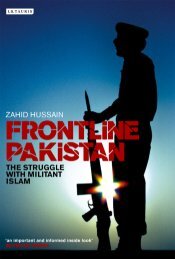Who Owns Pakistan - Yimg
Who Owns Pakistan - Yimg
Who Owns Pakistan - Yimg
Create successful ePaper yourself
Turn your PDF publications into a flip-book with our unique Google optimized e-Paper software.
Haroon's great grandfather had migrated to Karachi in 1858 and entered sugar<br />
and old clothing business in which they made big fortune in 1901. Sir Abdullah<br />
Haroon was known as the Sugar King and his residence Seafield in Karachi<br />
became the centre of <strong>Pakistan</strong> Movement in Sindh. At the time of his death in<br />
1942, Sir Abdullah Haroon was known among the wealthiest families of the<br />
subcontinent and his son Yusuf Haroon was Mayor of Karachi.<br />
Because of their headstart in both business and politics, Memons emerged as<br />
the most powerful of all the industrial groups in <strong>Pakistan</strong> between1947-71 and<br />
Sergy Levin claimed that every fourth private factory in <strong>Pakistan</strong> in the 1960's<br />
belonged to a Memon businessman. Lawrence White ranked Dawood as number<br />
one among the top 22 families and his list included seven Memons among the<br />
top 22 and 13 among the top 42 families in <strong>Pakistan</strong>.<br />
Earlier we have stated that several leading families resorted to Double D<br />
stratergy of Digging and Diversifying and covering their tracks in the post Bhutto<br />
era. Several of the celebrated families of 1970, therefore are presently operating<br />
in a very unobtrusive manner. It was during Bhutto era and immediately<br />
afterward that a number of them carried out a division of assets. In many cases,<br />
this division of assets resulted, as a stratergy rather than from family feuds.<br />
The decline of Memon power can be judged from the fact that in 1970, Haroons<br />
had 20 companies in their fold, Adamjee known as the Jute King had majority<br />
shares in 30 companies, Bawany's controlled 20 companies, Valika had 20<br />
companies, Dadabhoys 17, Jaffer Bros 17 and Karim 14 companies.<br />
Today Rangoonwala-Bengali group, Haroon, Jaffer and Karim have one<br />
company each listed on KSE and the number of Memons and their ranking<br />
among the top 22 families has drastically gone down as compared to the 1970's.<br />
In 1971 there were 13 Memons among the top 42 including Adamjee, Dawood,<br />
Bawany, Gul Ahmad, Karim, Rangoonwala, Haroon, Hussain Ibrahim, Ghani,<br />
Adam, Dada, Dadabhoy, Hasham but in 1995 their number among the top 45<br />
has been reduced to seven i.e Dawood, Gul Ahmad, Bawany, Al-Noor, Fecto,<br />
Tawakkal and Yunus Bros. Ten of the top Memon Groups from 1970's have<br />
disappeared. Three among the survivors have drastically have drastically gone<br />
down in ranking while four new Memons groups have joined the ranks. Dawood<br />
on top in 1970 is now at number 8, Gul Ahmad at 9 and Bawany at 23.<br />
Several leading Memons industrialists like Adamjee, Jaffer Bros and Fecto who<br />
were in process of setting up fertilizer factories and tractor plants in the 1970 had<br />
to abandon these because of the nationalization order. Investments by Memons<br />
was switched off, as if the leaders of Memon community held a meeting and<br />
decided to invest no more in <strong>Pakistan</strong>. The only projects of some industrial<br />
consequence set up by the Memons during last 25 years are Poineer Cable by<br />
Bawany and <strong>Pakistan</strong>-Synthetic by the Al-Karam group.<br />
75













